Last Chance to Catch NYC's Holiday Notalgia Train
We met the voices of the NYC subway on our nostalgia ride this weekend!

Peek behind the gorgeous bookshelves to uncover secrets of the Morgan Library and Museum in NYC as the institution turns 100!

The Morgan Library and Museum often appears on lists of the most beautiful libraries in the world. While this New York City institution is undoubtedly gorgeous on the surface, there are even more fascinating stories to uncover when you look a little deeper. As the library continues to celebrate its 100th anniversary, we uncover some of the Morgan’s hidden secrets, from concealed storage for J.P. Morgan’s priceless possessions to the latest upgrades of the historic campus.

On the ground floor of the library, some of the bookcases have brass handles. These handles indicate sections of shelving that are actually hidden doors! When swung open, they reveal spiral staircases that lead to the second and third tiers of the library. These passageways are still used today by librarians and curators who need to access items on the upper levels.
A secret closet also hides behind the bookcases in the southwest corner of the library. This storage area has extra deep shelves to accommodate oversized volumes. There is even a special book elevator inside, used to safely transport massive volumes between the three levels.
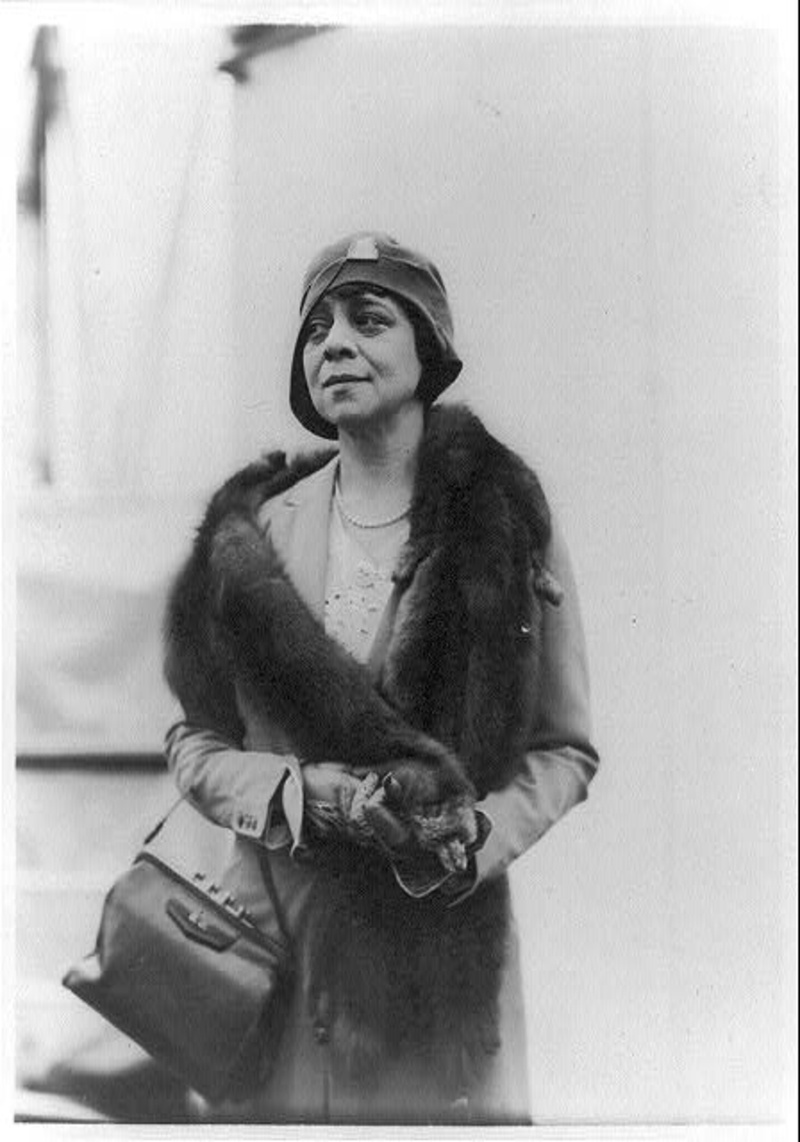
J.P. Morgan’s private librarian Belle da Costa Greene is the subject of an upcoming exhibit at The Morgan Library and Museum, Belle da Costa Greene: A Librarian’s Legacy, on view from October 25th through May 4, 2025. Born Belle Marion Greener in Washington, D.C., she was the daughter of Richard T. Greener—Harvard College’s first Black graduate—and Genevieve Ida Fleet Greener. When her parents separated in the 1890s, America was a deeply segregated nation. Her mother changed their last name to Greene and her family spent the rest of their lives passing as White.
Belle started her librarian career among the shelves of Princeton University Library where she caught the eye of Junius Spencer Morgan, J.P. Morgan’s nephew. Belle worked as Junius’ assistant before eventually becoming J.P.’s personal librarian. She spent seven years building and managing the financier’s extraordinary collection of rare books and manuscripts. After Morgan’s death, Belle continued to work for his son. She became the first director of the library and museum when it was made a public institution and held that role until she retired decades later.
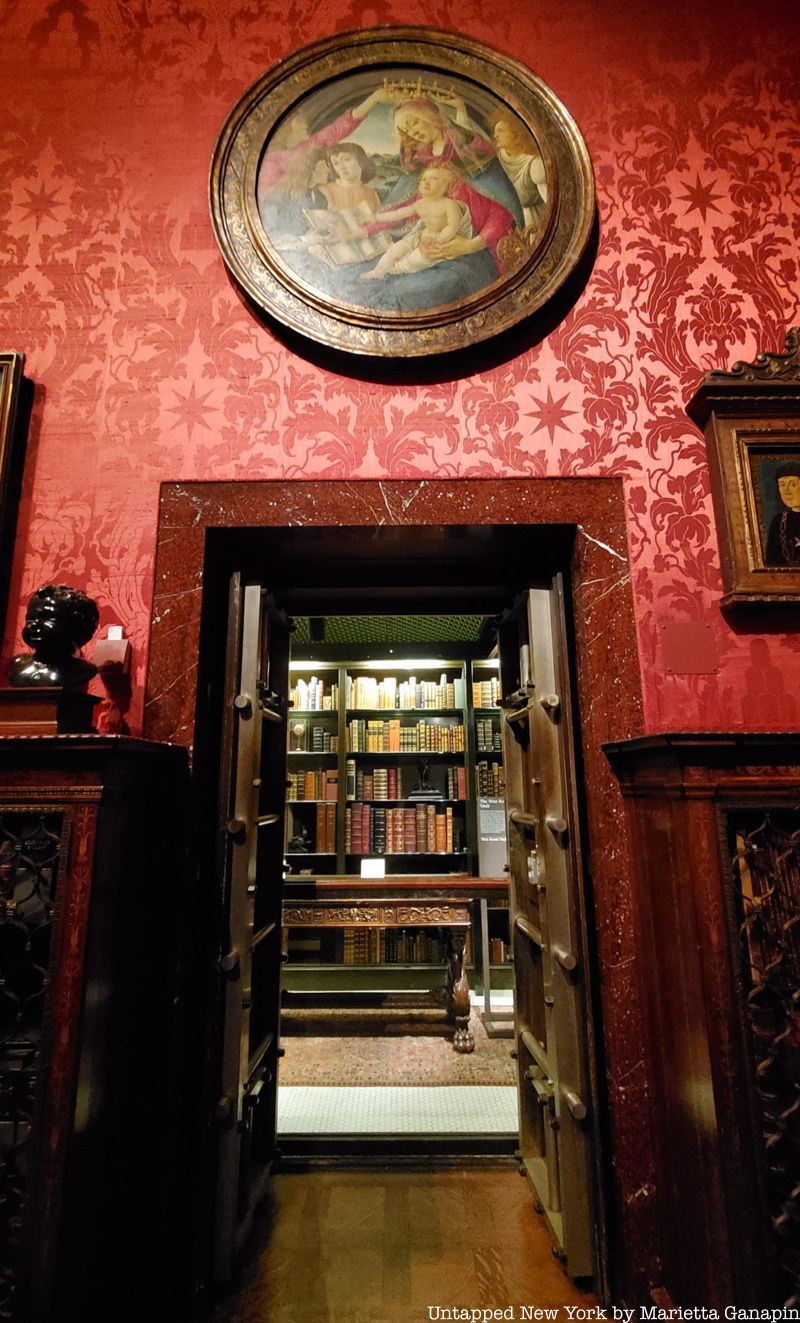
J.P. Morgan didn’t take any chances when it came to the safety of his invaluable collection. There was a night watchman and a mounted police officer posted outside. In 1908, Morgan’s library was one of the first buildings to have a large-scale alarm system installed. Inside, there were less obvious security measures including locked cabinets, secret desk compartments, and this steel-lined vault inside Morgan’s study. The bank-style vault was secured with a combination lock door fabricated by the renowned safe manufacturer Herring-Hall-Marvin of Hamilton, Ohio. From 1906 until 2003, Morgan’s medieval and Renaissance manuscripts were stored inside. Today, the vault holds a variety of special edition books from more contemporary authors, while the medieval and Renaissance manuscripts are kept in state-of-the-art underground vaults below the Renzo Piano-designed museum addition.
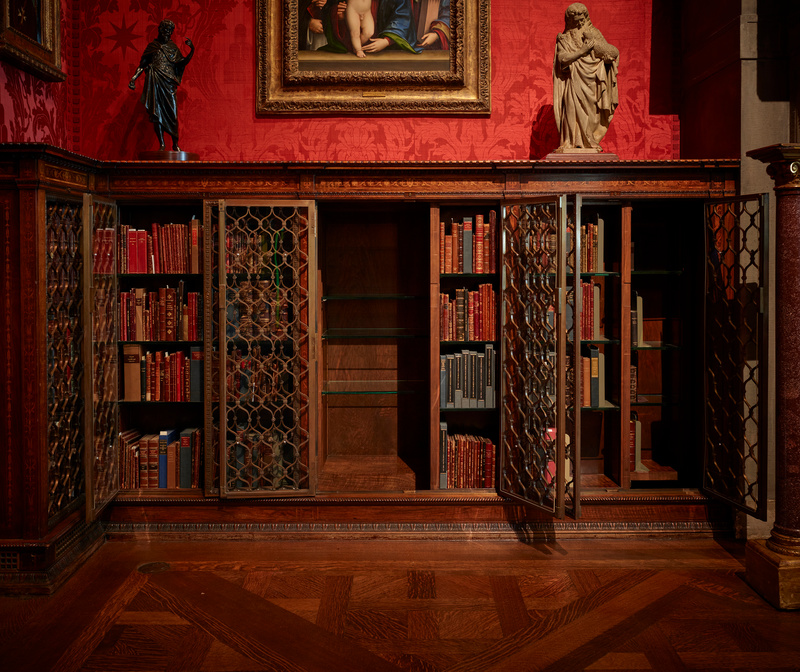
Morgan has many hiding places in his study, including the secret shelf seen above. It’s obscured by a shallow shelf in the front of the bookcase that slides away to reveal a space accessible only to Morgan and his librarian who held the keys.

Like many classical buildings, Morgan’s library is full of symbolism and allegorical figures. The stunningly ornate ceiling of the library’s East Room is a gilded masterpiece by artist Harry Siddons Mowbray. Mowbray populated the ceiling with female figures representing the arts and sciences, as well as portraits of male figures from antiquity and the Renaissance. Looking up, you’ll also see the twelve Zodiac signs. Morgan was an Aires (April 17th, 1837) and part of the Zodiac Club, a private dining club that only allowed twelve members at a time.
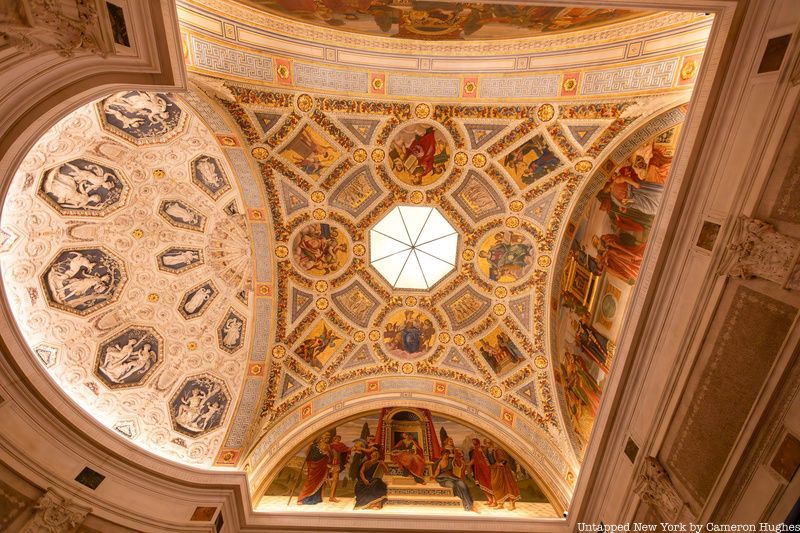
Mowbray’s work can also be found on the ceiling of the rotunda. Here, the artist pulled inspiration from designs by Raphael in buildings across Italy such as the Villa Madama in Rome and the Stanza della Segnatura in the Vatican. Hovering above the heads of visitors to the library are painted female figures who represent religion, philosophy, science, and art. Reliefs on the ceiling depict gods and goddesses such as Venus, Cupid, Mercury, and Psyche. Above the entrances, there are three lunettes filled with paintings that represent eras of literary achievement including Antiquity, the Middle Ages, and the Renaissance.
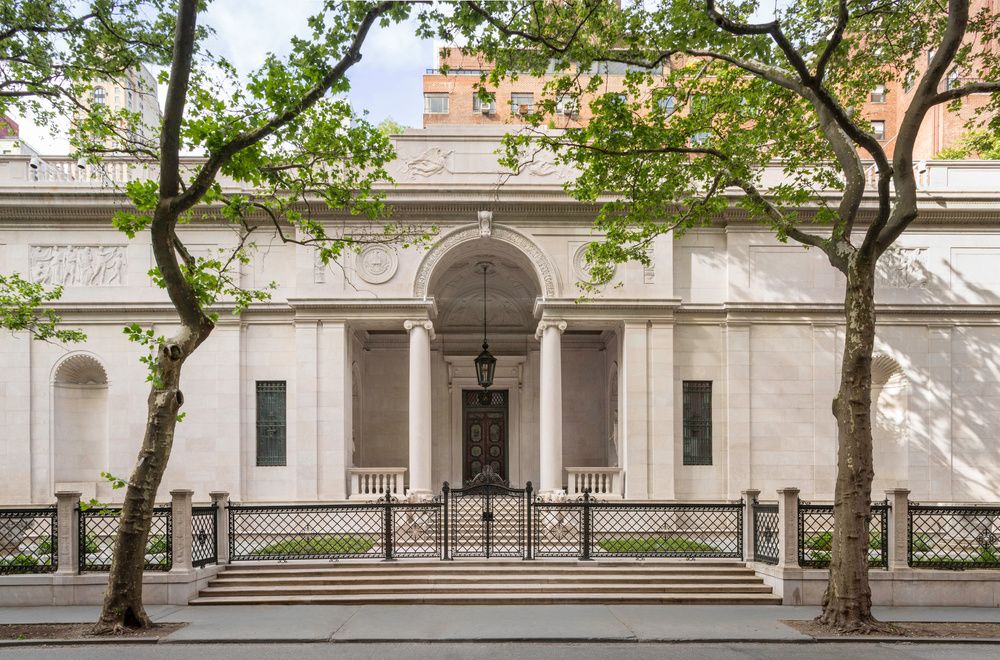
The Morgan Library & Museum isn’t just one sprawling building, it’s actually four different structures from different eras, now combined into one campus that covers half a city block. The oldest building is the library itself, a grand pink marble structure designed by Charles F. McKim of the illustrious architecture firm of McKim, Mead, and White. It was completed in 1906. In 1924, the Morgan Library became a public institution and needed more room for exhibitions and events. J.P. Morgan’s brownstone on 36th Street and Madison Avenue was demolished to make way for an exhibition room and reading room.
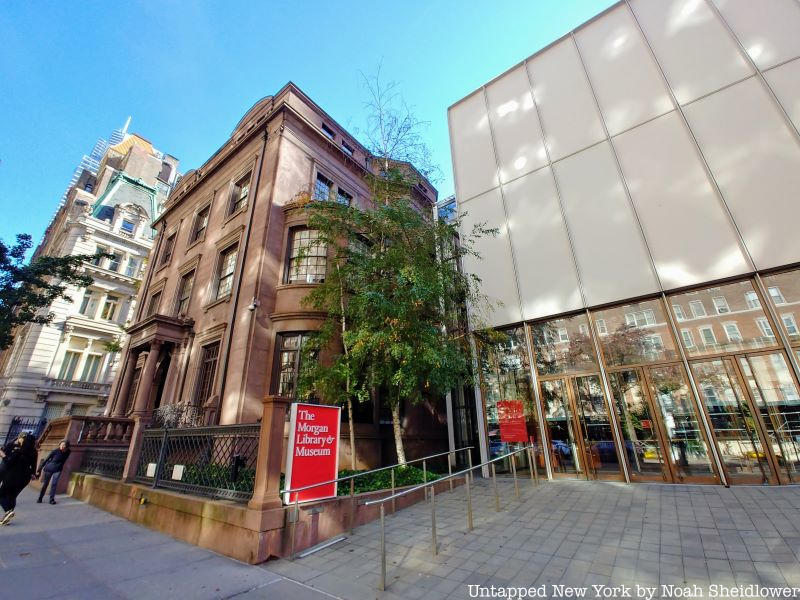
Next, in 1988, the institution acquired J.P. Morgan, Jr.’s brownstone on Madison and 37th Street. On the fourth floor of the historic Morgan House inside the Thaw Conservation Center, world-class conservators use state-of-the-art laboratory equipment and time-tested techniques to preserve the priceless tomes of the collection. The fourth and final building on the campus, a modern structure designed by Renzo Piano, was completed in 2006.
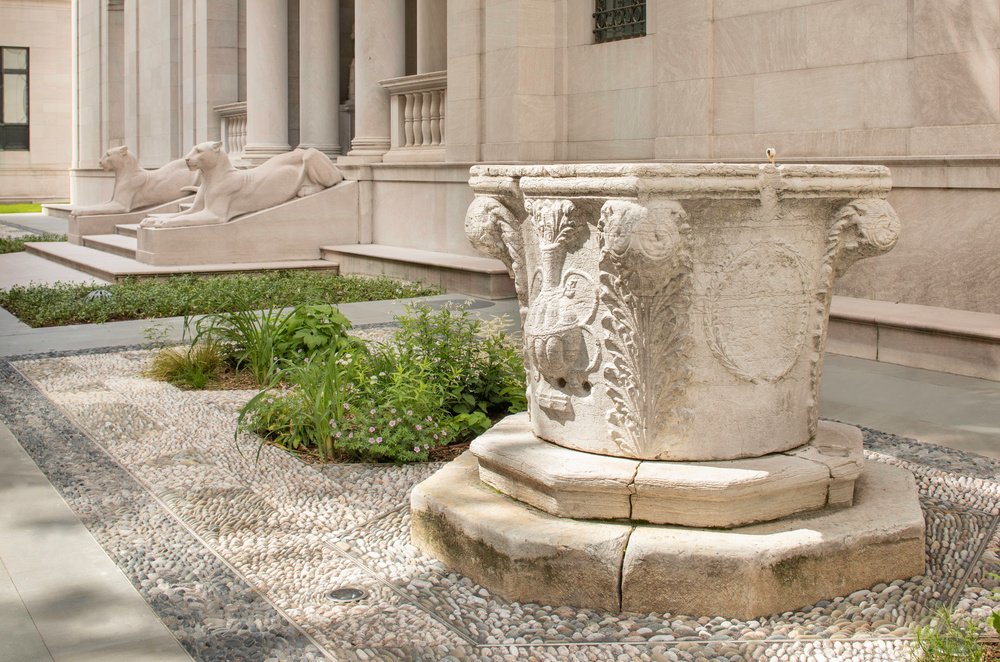
During J.P. Morgan’s life, he commissioned a garden to fill the space between his home and library building, but those plans were never realized. In 2022, a new public garden was opened. Designed by British landscape architect Todd Longstaffe-Gowan, the garden was inspired by J.P. Morgan’s Eurocentric taste and the aesthetics of the library’s interior spaces.
Bluestone paths and paving outside echo patterns found on the floors inside. Accenting the garden’s walkways you’ll notice cobblestone patches. These areas were crafted by Sicilian artisan Orazio Porto using handpicked and hand-laid stones from the Meditteranean Sea and volcanic ash from Mount Etna. Each stone was carefully placed and secured using methods employed by Italians for generations.
Next, check out Secrets of the Brooklyn Public Library
Subscribe to our newsletter